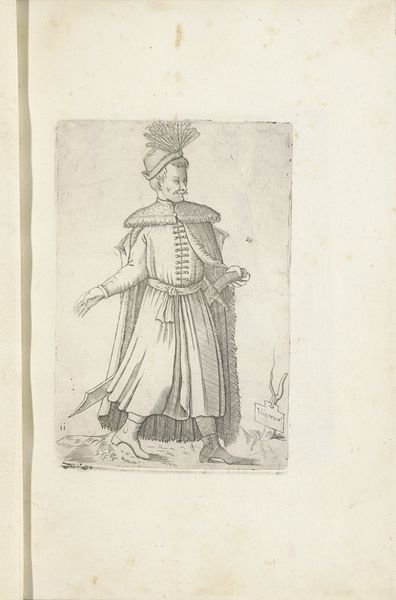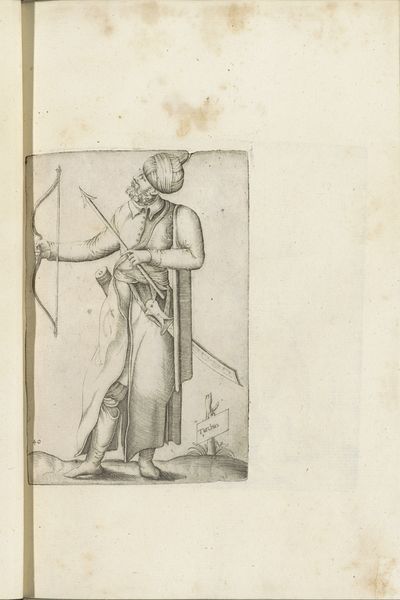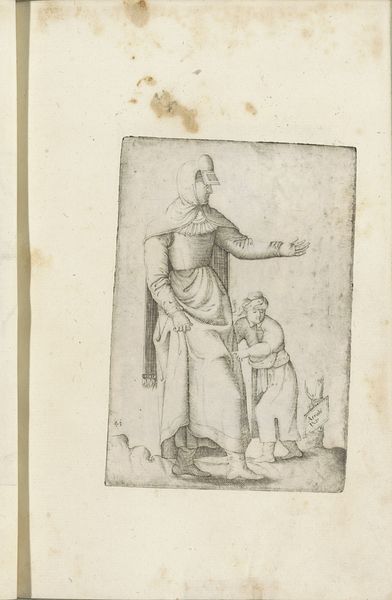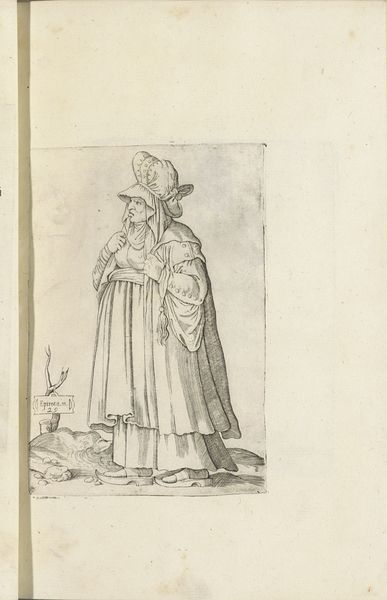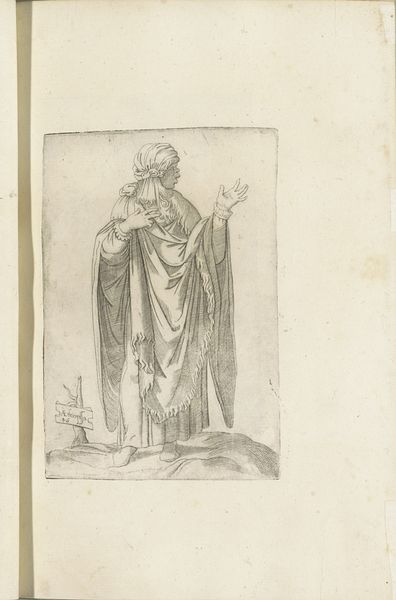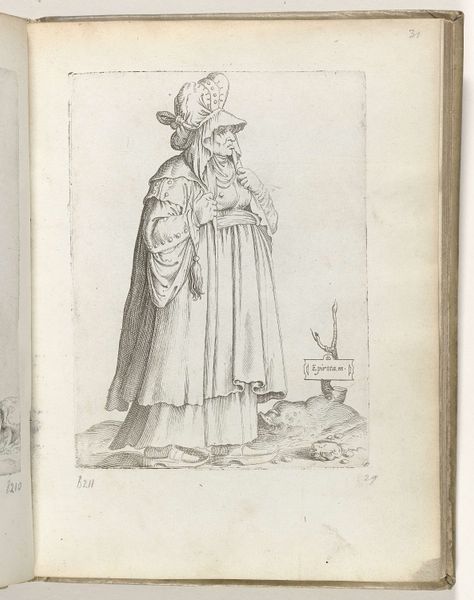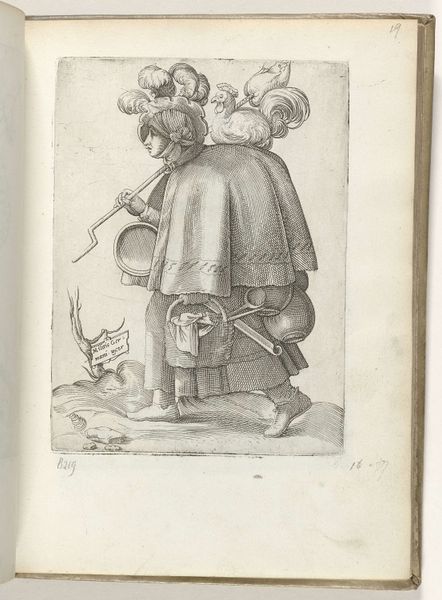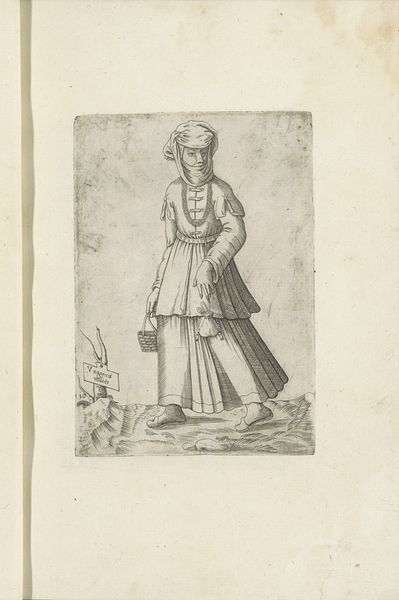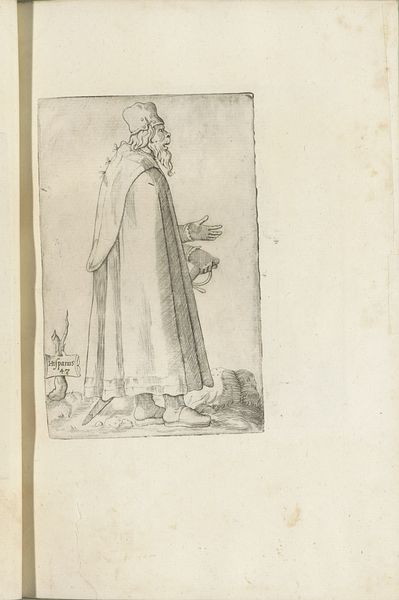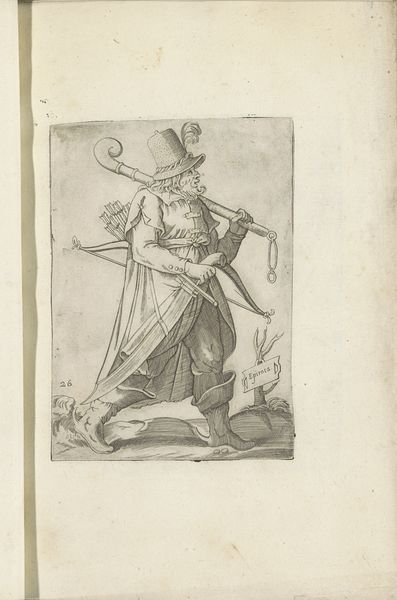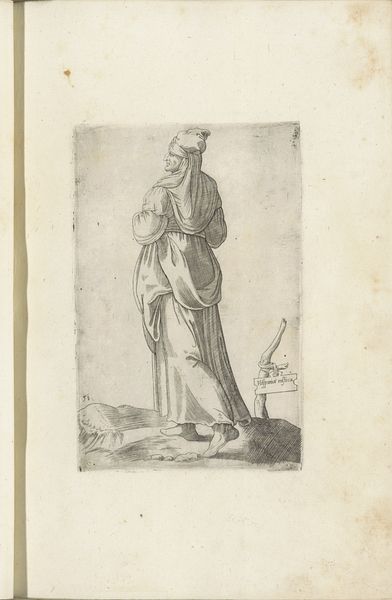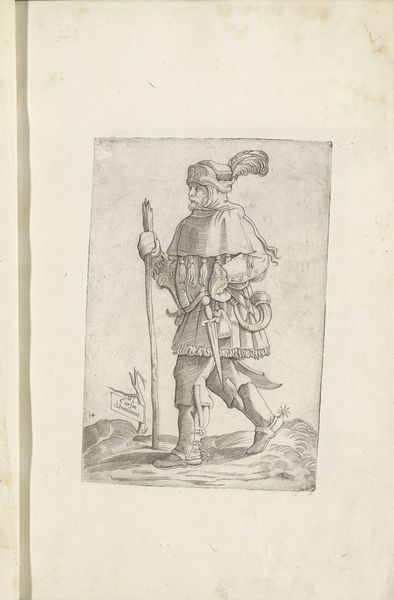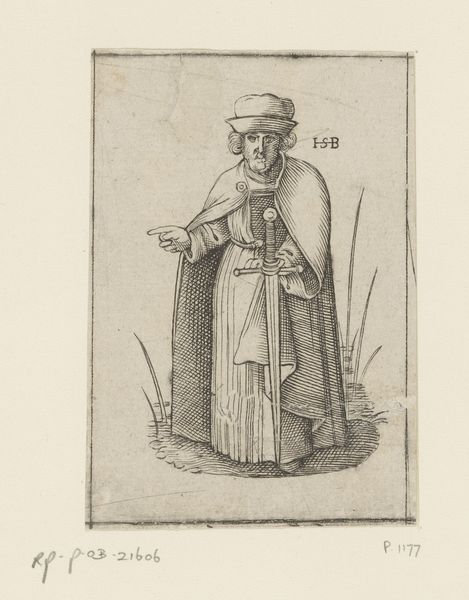
drawing, paper, ink
#
portrait
#
drawing
#
aged paper
#
toned paper
#
light pencil work
#
quirky sketch
#
sketch book
#
mannerism
#
figuration
#
paper
#
personal sketchbook
#
ink
#
pen-ink sketch
#
sketchbook drawing
#
history-painting
#
storyboard and sketchbook work
#
sketchbook art
Dimensions: height 265 mm, width 195 mm, height 150 mm, width 105 mm
Copyright: Rijks Museum: Open Domain
Fernando Bertelli's "Hungarian Warrior" presents us with a figure laden with potent symbols of martial identity and cultural memory. The sword and mace, prominently displayed, are not mere weapons; they are emblems of power, justice, and defense, echoing motifs found in ancient Roman military iconography. Consider the sword, a symbol deeply embedded in the collective psyche, reappearing across cultures from the Bronze Age to medieval chivalry. Its significance transcends mere combat; it embodies honor, authority, and the very essence of heroism. Similarly, the mace can be traced back to ancient Mesopotamia, where it symbolized royal power and divine authority. Note the warrior’s determined gaze and posture, evoking a sense of resolute purpose. These gestures resonate with the pathos formula, a visual language of emotional expression that has persisted through art history. The emotional resonance of such imagery engages viewers on a deep, subconscious level, tapping into primal instincts of fear, respect, and admiration. Thus, the figure of the Hungarian warrior is more than a historical depiction; it is a culmination of archetypal symbols, echoing through the ages, continuously reshaping and re-emerging in different guises across the vast tapestry of human culture.
Comments
No comments
Be the first to comment and join the conversation on the ultimate creative platform.
